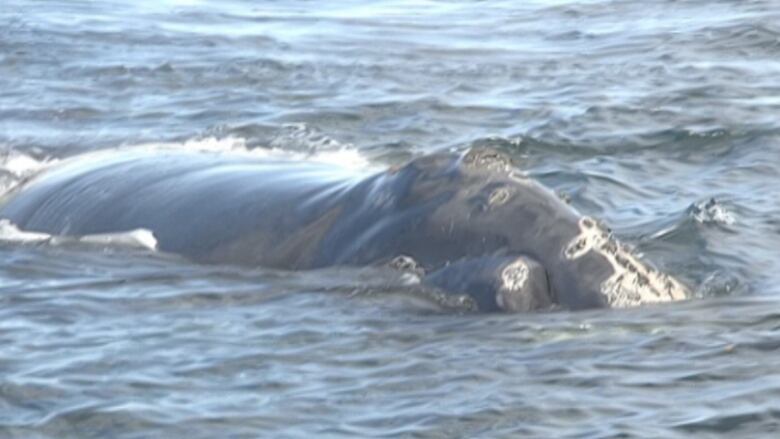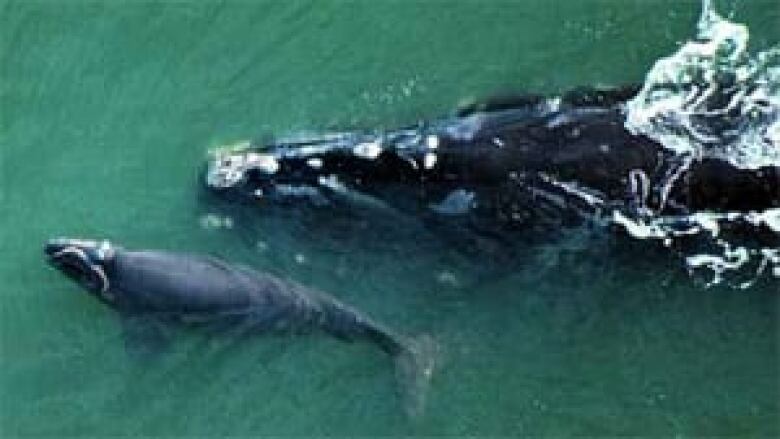Rare North Atlantic right whales spotted off Cape Breton
Marine biologist suspects right whales have been following their food source, plankton

The rare North Atlantic right whale has been making a splash in the waters off Cape Breton, to the surprise of some.
Five or six of the big mammals have been sighted off the northern tip of the island this summer.
- Endangered right whales to be tracked using autonomous gliders
- Absence of right whales in Bay of Fundy puzzles scientists
Moira Brown, senior scientist at the New England Aquarium in Boston,says that may not sound like a lot until you consider that there are only about 500 of the whales in all the world's oceans.

North Atlantic right whales are known to travel into the Bay of Fundy in the summer to feed with their calves. Most make the long trek from their breeding grounds off Georgia and Florida, ending up in the bay's plankton-rich waters around June. They are also known to gather in the Roseway Basin off Nova Scotia's south coast.
Seeing the behemoths off Cape Breton is not unheard of but they're much more common in the Bay of Fundy.
Ray Fraser, whofishes and runs ocean tours out of Bay St. Lawrence, saysa North Atlantic right whale came right up to his boat recently as he and his crew were setting traps.
"This is not their normal stomping grounds, so just to see them, we're very lucky. Unsure why they're coming here. It could be something as simple as a shift in prey or a growth in the prey but we're happy," he says.
Brown says there's normally a substantial population in the Bay of Fundy in the summer, but their numbers started dropping last year.
Her theory is the same as Fraser's.
"Right whales eat plankton and there just wasn't the plankton resource there that has been there in the past years and we suspect it's the same this year. So it makes sense for the whales to move around and try to find food sources elsewhere and hopefully that's what's happening when they're going up to Cape Breton, that they're getting some food," says Brown.
With so few North Atlantic right whales in the world, virtually every one has been identified. There are a variety of identifying marks that make each right whaleunique including scar patterns on the fluke or tail and along the whale'sbody. Researchers are also able to use the large patches of raised tissue on the whale's head, called callosities, to identify individuals.
Researchers hope everybody who sights one will report it so they can keep an accurate record of the whales' movements.
How does one identify a North Atlantic right whale from other marine mammals in the sea? The lice-infested, white callosities on their heads are a dead giveaway.
The right whale also tends to be amuch lazier swimmerthan itsdeep-diving cousin, the humpback whale. Due to their high fat content, right whales can often be seen swimming slowly near the surface, a habit that makes the whales vulnerable to ship strikes.












_(720p).jpg)


 OFFICIAL HD MUSIC VIDEO.jpg)
.jpg)



























































































